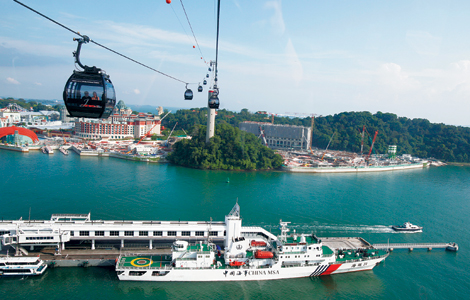|
|||||||||||
BEIJING - As the world rings in the New Year, the China-ASEAN Free Trade Area (CAFTA) will celebrate the second anniversary of its establishment - a successful model South-South mutually beneficial cooperation.
The CAFTA is the fruit of years of efforts by China and ASEAN countries. Over the past two years, China-ASEAN trade has grown remarkably, creating a demonstration effect on regional economic integration and serving as a stabilizer staving off global economic risks.
China is now ASEAN's largest trading partner, while ASEAN remains the No 3 trading partner of China. Two-way trade in 2010 increased 37.5 percent to $292.8 billion, hitting a new high.
In the first 10 months of 2011, bilateral trade reached $295.9 billion, a 25.7 percent increase over the previous corresponding period. Both have set a target of expanding bilateral trade to 500 billion dollars in 2015.
The CAFTA has also deepened its economic cooperation in such areas as service trade, mutual investment, information and communications, transportation, energy, culture, tourism and development of the Mekong river.
The creation of the CAFTA has enabled both sides to allocate resources and upgrade their industrial structures at a higher level and in a broader scope.
China and ASEAN are making ever greater use of this platform to share development opportunities.
While having created opportunities for regional development, the CAFTA has also brought hope to the world economy still mired in recession. With the eye-catching figures in China-ASEAN trade cooperation, the growth of the CAFTA has injected new vitality into the global economy.
At a time of global economic fragility, countries should work together to achieve common development and prosperity, as no country alone can cope with global economic woes or could escape unscathed.
The CAFTA has proved a successful model not only for South-South cooperation, but also for interregional cooperation in other parts of the world as well as cooperation among all countries in the world.
Hot Topics
Kim Jong-il, Mengniu, train crash probe, Vaclav Havel, New Year, coast guard death, Internet security, Mekong River, Strait of Hormuz, economic work conference
Editor's Picks

|

|

|

|

|

|







